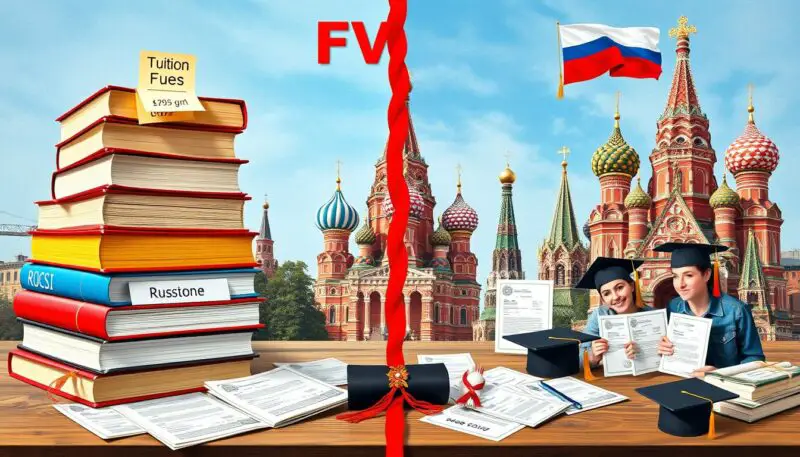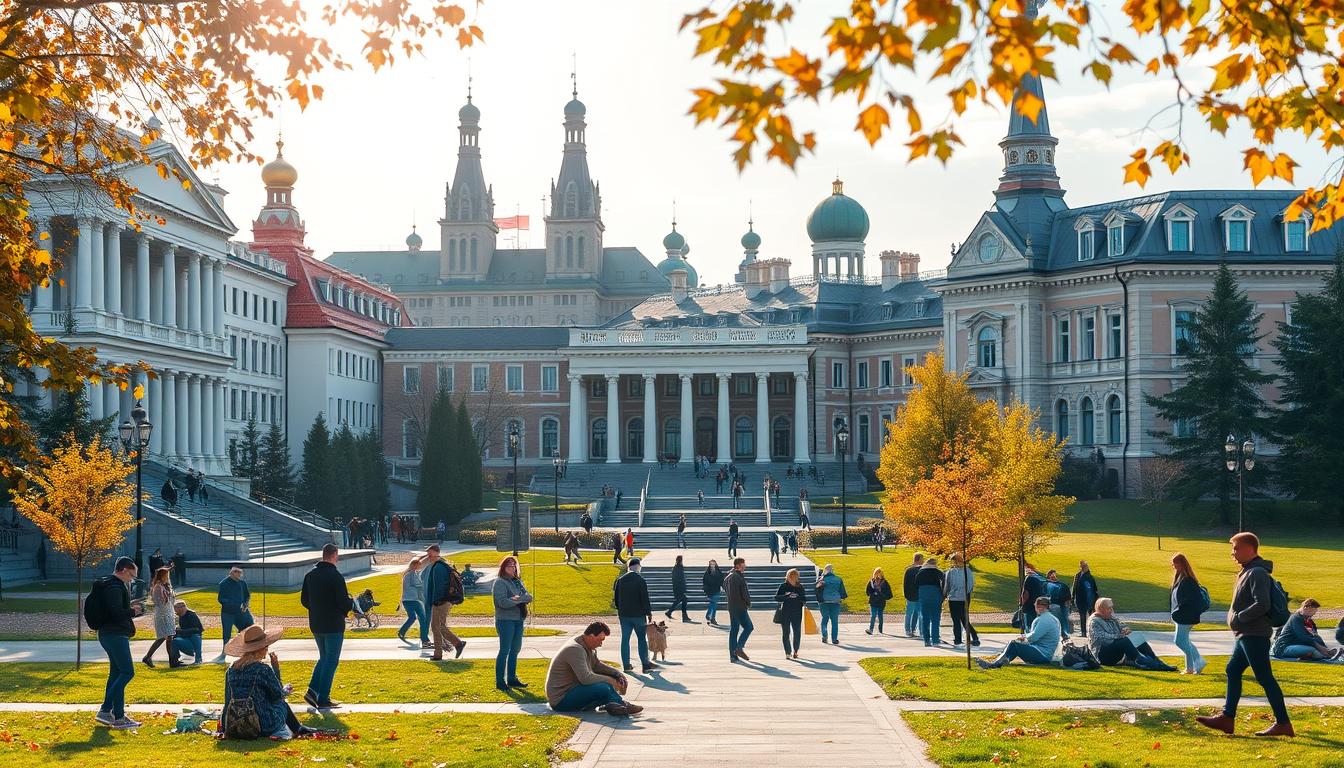Education in Russia presents a landscape that is both distinct and intricate, drawing numerous contrasts when measured against Western universities. From its structured learning paths to rigorous academic standards, the Russian education system has its unique characteristics that shape its effectiveness and scope. Understanding this system can be crucial for students considering studying abroad or evaluating their educational options.
In this article, we delve deep into the Russian education system, dissecting various aspects such as its organizational structure, funding mechanisms, academic curriculums, and faculty credentials. You will gain insights into how education in Russia stacks up against what you might expect in Western universities, particularly regarding costs, methodologies, and the cultural nuances that influence learning experiences.
Overview of the Russian Education System
The Russian education system presents a comprehensive approach to learning, emphasizing various educational levels from early childhood through advanced studies. This structure equips students with the necessary skills and knowledge across diverse fields. Understanding how the Russian education system unfolds can illuminate its strengths and weaknesses while offering insights into its operational frameworks.
Structure of Educational Levels
The Russian education system is divided into distinct educational levels: preprimary, primary education, secondary education, and higher education. Each level plays a crucial role in shaping the academic trajectory of students.
- Preprimary Education (Doshkolnoe obrazovanie): Typically starts at ages 3 to 6 ½, though this level is not compulsory.
- Primary Education (Nachal’noje obshchee obrazovanie): Compulsory education begins at age 6 ½, lasting for four years.
- Secondary Education (Osnovnoe obshchee obrazovanie): Comprising lower and upper secondary education, students ages 11 to 17 benefit from a comprehensive curriculum.
- Higher Education: Encompasses various university types and other institutions, allowing for diverse academic pursuits.
Primary and Secondary Education
Primary education lasts four years and lays the foundation for lifelong learning. Students are required to pass written exams in core subjects, fostering essential skills early on. Secondary education progresses through lower secondary (grades 5 to 9) and upper secondary (grades 10 to 11 or vocational schools). This bifurcation offers students the choice to pursue either a general academic path or vocational training, leading to various career opportunities.
Higher Education and University Types
The landscape of higher education in Russia encompasses different university types such as universities, lyceums focusing on specialized subjects, and gymnasiums that emphasize language and humanities. Higher education typically involves completing bachelor’s, master’s, and specialized diploma programs, structured to accommodate a range of academic interests. Recent trends show a decline in tertiary enrollments, prompting discussions about institutional quality and the future of the Russian education system.
Education in Russia: Costs and Financial Support
Understanding the costs associated with higher education in Russia reveals a landscape that is notably different from Western institutions. The average annual tuition fees at Russian universities range from $1,000 to $4,000. This amount starkly contrasts with Western tuition, where fees can exceed $30,000 annually. While prestigious institutions may charge more, many programs remain affordable, allowing access to a larger demographic of students.
Tuition Fees at Russian Universities
Tuition fees at Russian universities can vary widely. Full-time bachelor’s degree programs typically cost around ₽240,000 to ₽260,000 per year. In some cases, fees can go as low as ₽122,500 for specific programs, while others may reach up to ₽880,000 for particular fields of study. Master’s degree tuition generally ranges from ₽260,000 to ₽280,000 annually, indicating a commitment to offering affordable education relative to Western tuition costs.
Government Funding and Scholarships
Government funding plays a significant role in supporting students. Approximately 70% of students in Russia receive some form of financial support, either through government grants or university scholarships. In 2023, the government allocated over 150 billion rubles (approximately $2 billion) to bolster higher education institutions, furthering the mission to provide accessible education. Notably, Russian government scholarships allow foreign citizens to study for free, making Russia an attractive option for international students.
Comparison with Western Tuition Fees
A comparison with Western tuition illustrates the affordability of Russian education. With American colleges often charging fees upwards of $30,000 per year, Russian universities present a more cost-effective alternative. This financial structure not only makes education accessible but also encourages a higher enrollment of international students, who constituted around 351,500 in the recent academic year. Countries such as Kazakhstan and Uzbekistan are among the top sources of these students, illustrating Russia’s growing influence as a leading educational destination.

Academic Curriculum and Faculty Qualifications
The academic curriculum in Russia presents distinct differences compared to Western models, particularly in its emphasis on memorization. Students encounter a structured approach focused on factual retention and comprehensive subject coverage. This method often prioritizes rote learning over creative problem-solving, which can impact overall critical thinking development. As you explore these educational practices, it becomes evident how they align with broader teaching standards across the globe.
Curriculum Differences: Memorization vs. Creative Problem Solving
In Russia, the academic curriculum heavily emphasizes memorization. Students often find themselves engaging with extensive amounts of information, reflecting a traditional approach. While this method certifies a solid grasp of various subjects, concerns arise regarding its effect on critical thinking skills. Many educators argue that a balance between memorization and creative problem-solving would better prepare students for real-world challenges.
Faculty Credentials and Teaching Standards
Faculty qualifications in Russian institutions hold strict adherence to educational norms. Typically, educators possess advanced degrees alongside professional certifications, ensuring high teaching standards. This robust educational background provides students with the needed expertise in their fields, equipping them with quality instruction and guidance. With a competent faculty, universities maintain a strong reputation within the academic community.
Research Opportunities in Russian Institutions
Research opportunities in Russian institutions have expanded significantly in recent years. Universities now offer various avenues for students to engage in collaborative projects and international research initiatives. These opportunities not only enhance your academic experience but also allow for meaningful contributions to global knowledge. Engaging in research fosters critical skills that complement the memorization-heavy academic curriculum.
| Aspect | Memorization | Creative Problem Solving |
|---|---|---|
| Focus | Factual Knowledge | Analytical Skills |
| Teaching Method | Rote Learning | Interactive Learning |
| Assessment | Standardized Testing | Project-Based Evaluation |
| Faculty Requirement | Advanced Degrees Required | Experiential Learning Approaches |

Conclusion
Education in Russia reflects a distinctive framework when compared with Western universities, marked by its multi-tiered structure and government-supported funding models. You will find that tuition fees in Russian higher education institutions are generally more affordable, providing greater access for both rural populations and low-income families. This affordability is particularly significant in light of the rising enrollment in universities, which surged by 40% from 2013 to 2017, making Russia an increasingly attractive option for international students.
However, the Russian education system does face challenges, particularly in the areas of rote learning and a reliance on memorization, which can hinder the development of critical thinking skills. This contrasts with the more progressive educational approaches often adopted in Western institutions. Nonetheless, educational reforms are currently underway, with various academic initiatives aimed at enhancing the global competitiveness of Russian education and addressing these issues.
As you explore post-secondary options, understanding the nuances and ongoing changes within the Russian education system will provide valuable insights. With expectations of tripling the current 200,000 international student population, the evolution of Russian education presents both challenges and opportunities, paving the way for a more comprehensive learning environment suited for students worldwide.

